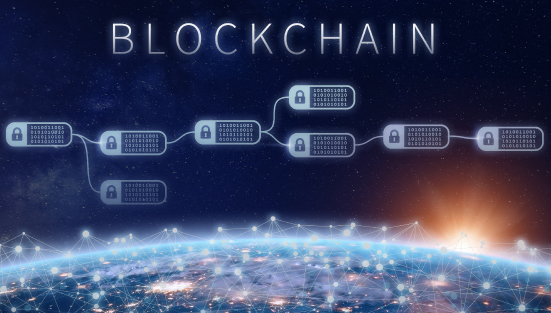Blockchain for IoT Security
- Blockchain
- Internet of Things
Blockchain - Almost tamperproof technology
Blockchain is a key trend these days with huge potential across domains. Blockchain is a decentralized distributed, immutable ledger which can record transactional information and ownership data. In it all transactions are stored on an immutable database and the database is distributed across multiple nodes situated across the globe. Security is incorporated in Blockchain ecosystem using this decentralization, strong public-key cryptography and strong hash function. It is assumed to be tamperproof as tampering any block requires tampering its previous block and then all previous blocks on that Blockchain. It helps to develop trust in a digital ecosystem.

Potential of IoT systems
Internet of Things (IoT) offers a huge network of connected things. These can include physical objects, devices and living entities including humans. These things collect and share data about their working over the existing internet and cloud infrastructure. This data is processed and analyzed for better understanding of their working and improving efficiency and productivity. IoT offers software as-a-service(SaaS) application that analyzes data captured through various sensors and presents it through a dashboard. IoT is becoming the driving force behind trends like industrial automation, smart city, smart grid, smart healthcare ecosystem etc. It is expected that by 2030 there will be 125 billion IoT devices around the globe and it is going to impact most industries if not all.
Vulnerability of IoT systems
One of the key threats IoT is facing is cyber-attacks. In recent times IoT devices and infrastructure have been the target of cyber-attacks; devices connected over the IoT network has been constantly compromised due to lack of proper security features. Security is going to play a huge role in the growth of IoT as concerns have been raised over the sustainability of IoT due to lack of secure infrastructure. IoT faces key security challenges like authentication, integrity, and identity. A centralized security arrangement will be difficult to implement due to scalability and dynamic behavior of IoT networks.
Leveraging Blockchain for IoT security
Blockchain technology can drastically reduce the risk of IoT devices being compromised by incorporating a secure, authentic, and standardized process of data collection and data transfer by the IoT devices. Currently IoT ecosystem is based on a centralized approach where a cloud or server platform is used to identify and authenticate nodes. Decentralized and immutable nature of Blockchain can be used to build a peer to peer(P2P) IoT network where there is no centralized authority and no need for devices to trust each other; such an ecosystem will avoid several attacks on IoT.
In Blockchain certain nodes validate each transaction on the network by solving some cryptographic puzzle thus eliminating the need for a centralized authority to authenticate any interaction between IoT devices. If a compromised device tries to push false information, it will be identified immediately using the consensus algorithm and that particular device will be prevented from disturbing the network. All the IoT devices and users will use public key cryptography as a substitute for login credentials, using the strong cryptographic algorithm data generated by each node on a IoT network, that can be stored and transferred securely in those cases where privacy is of utmost concern. Using the private key only the manufacturer will be able to install firmware on a IoT device by signing the digital content so any attacker will not be able to run any malicious code on the device. Decentralized and P2P nature of Blockchain will reduce the chances of distributed denial of service (DDoS) attack as attackers will not be able to gain access to public instructions for DDoS attacks. A decentralized domain name system (DNS) can be built using Blockchain to further avoid DDoS attacks. Blockchain may lead us to a decentralized web from the current centralized client server model, there will be no centralized servers and data to be retrieved over internet will be stored on multiple nodes of a Blockchain.
Following are the various job roles in the field of IoT security using Blockchain:
1. Developer: Responsible to develop applications to counter the security flows using blockchain technology concepts.
2. Consultant: Problem-solving Experts with knowledge in IoT Security and Blockchain to guide the team of developers to go about the development process.
3. Solution Architect: Expert with knowledge of how the development process should be in order to achieve the desired goal.
The Bridge course on Blockchain of the FSP platform may address IoT security as a separate module and a case study with respect to IoT Security can be included in the case study section of the said course.
About nasscom FutureSkills Prime: FutureSkills Prime started as a platform with a vision to upskill/reskill every Indian citizen in emerging technologies. A novel skilling program initiative of Ministry of Electronics and IT (MeitY) and National Association of Software and Services Companies (nasscom), it incentivizes the cost of the eligible course(s), providing authentic and accredited certifications acceptable in the industry.

Courses run under FS Prime Programme are as below:
- Bridge
These courses are specifically designed to create awareness of Data Science, Machine Learning, and Deep Learning Tools & techniques among participants so that they can recommend and apply these technologies in real life and at their workplaces. The course is meant for graduates, entrepreneurs, interns, fresh recruits, IT professionals, non-IT professionals working in the IT industry, ex-employees, and faculty members.
- Training of Government officials (GOT)
Under this programme Government Officials will be trained on emerging technologies of AI, which will help them learn about cutting edge technologies and upskill them to make them work more efficiently for e.g. by creating new methods for documentation. In the near future, this would help officials to work more productively on new government & IT projects.
- Training of Trainers (TTT)
This provides an overview of Artificial Intelligence, principles, and approaches with which faculty can enhance their knowledge in the area of AI, ML, Deep Learning, NLP, Computer Vision, and its application. After completion of course, Faculty will acquire in-depth knowledge of AI and would be able to conduct training for courses under the FS PRIME Programme.
Written by NIELIT Patna


